Best Guard Dogs for Families — Vets Reveal the Top Lovable and Loyal Breeds
Getting a guard dog can improve your peace of mind.
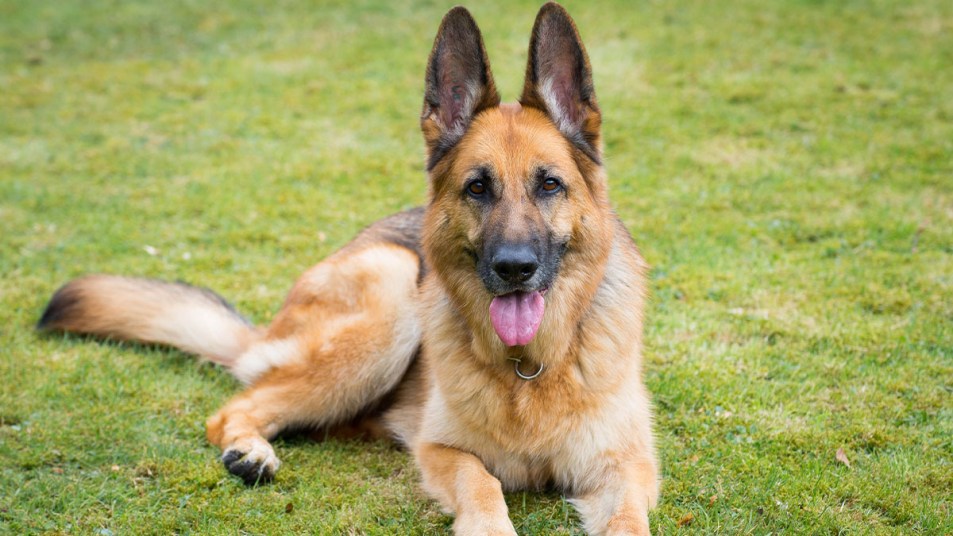
There are so many good reasons to adopt a dog. They offer companionship, love and a whole lot of fun. Another benefit of bringing a pup into your family: They add a sense of security. Dogs are loyal to their families and will naturally want to guard their “pack” from harm or intruders. That said, some pooches are better than others at offering protection. What are the best guard dogs for families? Here, vets and dog behavior experts share the traits and breeds of dogs that can keep you and your family safe.
What makes a good family guard dog
Keep in mind that trained guard or protection dogs and family guard dogs are different, says Kait Hembree, head of training at Good Pup. Professional guard dogs are working dogs, and they undergo extensive training to expertly protect people and property. “Very few families need or require a traditional guard dog. That being said, most families do want their trusted four-legged companion to alert them that someone is at their door,” she explains.
“The best guard dogs for families are brave and loyal while knowing when to protect from an intruder, but can be a great family or personal pet that is well behaved to visitors and friends,” says Nicole Ellis, a certified professional dog trainer and pet lifestyle expert with Rover. “It’s important to understand that these are not dogs that are ready, alert and on-guard 24/7 but only when they need to be.”
One example of an important gamily guard dog trait is discernment, notes Hembree. A good family guard dog doesn’t just bark at everything — they knows when someone is or is not a threat. “Most dogs will instinctively alert their family that someone is at the door or bark at an unexpected intruder in the home. Being able to use auditory or scent capabilities to distinguish the difference between familiar and unfamiliar visitors as they approach is an invaluable guarding skill.” (You want to be able to protect your dog in return — click through for these commands that could save your dog’s life.)
Best family guard dogs
There are many dog breeds that make great family pets and guard dogs. With so many breeds to choose from, we compiled a comprehensive list of the six best guard dogs for families.
1. German Shepherds
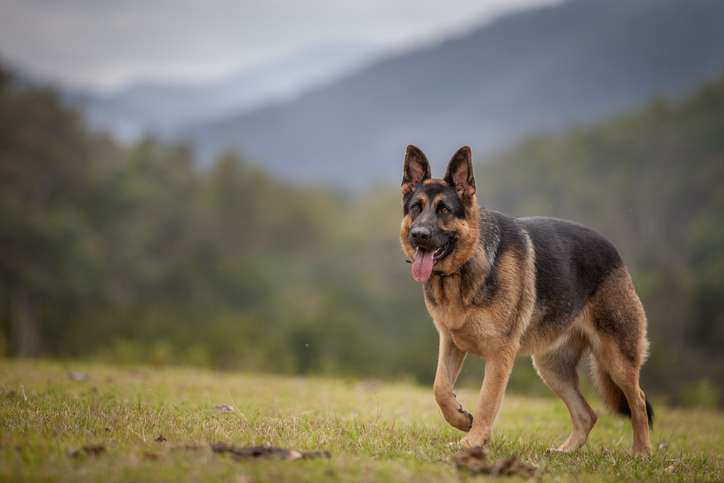
Intelligent, family-friendly and loyal, German Shepherds are among the best guard dogs a family can have. “They’re sharp and always on the ball,” says veterinarian Dr. Sabrina Kong, contributor at We Love Doodles. They have a natural protective and obedient streak thatmakes them easy to train. German Shepherds consider the people they love members of their pack.
An important factor in training German Shepherds to be excellent guard dogs is how they’re socialized as puppies. “Socialize them — introduce them to different people, places and situations,” recommends Dr. Kong. With proper training, this breed of dog can identify and distinguish between a harmless stranger and a trespasser.
2. Rottweiler
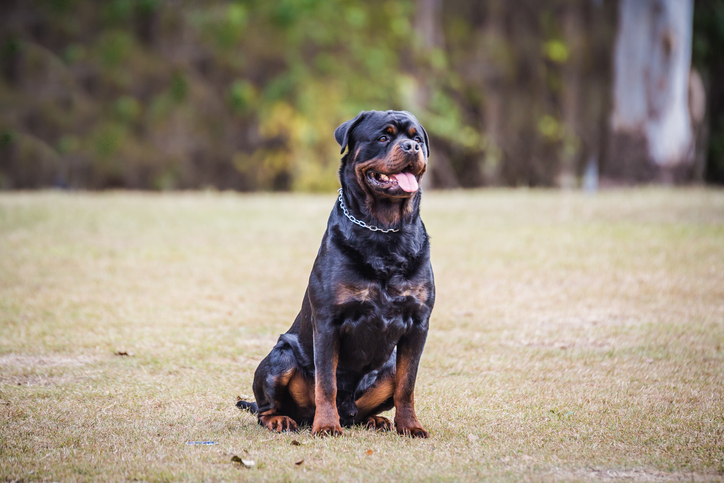
Rottweilers, or Rotties for short, make for fearless and affectionate family dogs. Rotties are known for their tenacity and strength, which make them exceptional guard dogs. “Rottweilers are naturally protective, but total softies with their families,” adds Dr. Kong.
While their powerful appearance can be intimidating, their instinct for danger is unmatched. “A Rottweiler under my care named Daisy is an example of this characteristic balanced temperament and controlled reaction,” says Dr. Sara Ochoa, vet contributor at Hound Games. “The subdued growl she emitted when the mailman approached was a textbook display of measured protectiveness — alert, yet discerning enough not to launch into an unprovoked attack.”
3. Bullmastiff
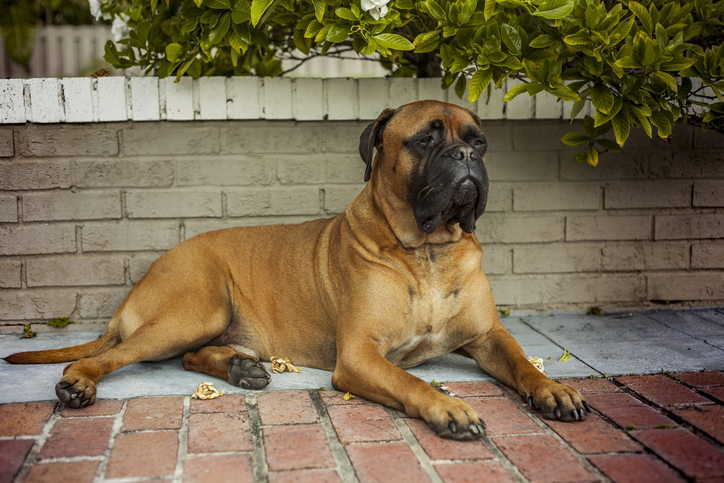
Breeders created this pup by crossing a bulldog and a mastiff. Among the world’s many large dog breeds, these make especially loyal and protective family pets. Like Rottweilers, Bullmastiffs may look intimidating, which is one of the reasons they are such effective protectors. By the time they reach full maturity, they can be as tall as 27 inches at the shoulder and weigh between 100 and 130 pounds. They’re protective, yet affectionate, which is a good combo for a family guard dog. “Bullmastiffs combine a daunting presence with an innate tenderness when interacting with family members,” adds Dr. Ochoa.
Like most intelligent working breeds, Bullmastiffs do best when trained and socialized well from a young age. When their energy levels are directed towards performing a job, like protecting family members, they make great canine companions.
4. Doberman Pinscher
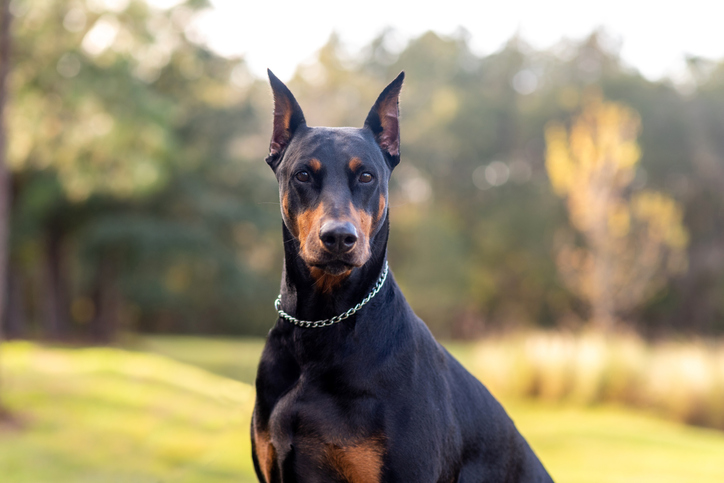
As far as sleek and muscular dog breeds go, it doesn’t get much better than a Doberman Pinscher. Often described as “nature’s noblemen,” Dobermans aren’t just strong — they’re incredibly smart and can be trained as working dogs, whether you put them to work in service roles or as guard dogs. They’re fast and strong, and their keen observation skills make them excellent watchdogs. Dobermans are also known for being great with kids and affectionate towards family members — in fact, the American Kennel Club gives them the highest rating in both of these categories.
In addition to being a great family guardian dog, Dobermans are physically unique — identifiable by their compact body, triangle-shaped head and short-haired coat. The latter means there’s less shedding to deal with, which makes the Doberman Pinscher a good option for owners with pet allergies or a sensitivity to dander.
5. Tibetan Mastiff
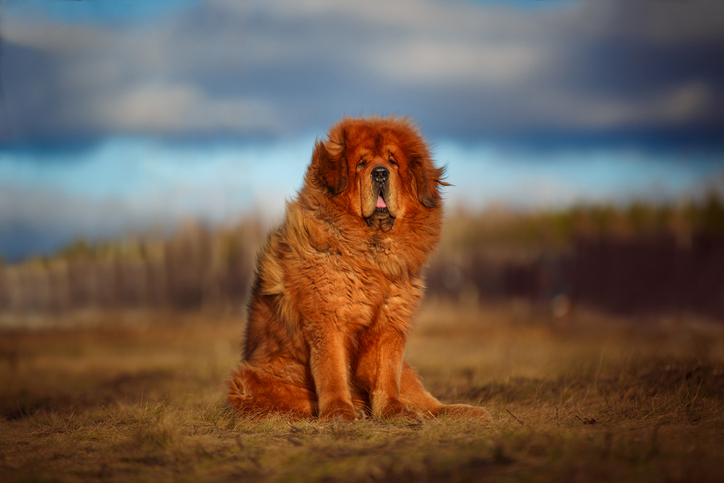
The larger, shaggier cousin of the Bullmastiff, the Tibetan Mastiff is a loyal companion and a great watchdog. This highly intelligent breed was developed to guard livestock in the Himalayas, which means that the instinct for protecting their flock and staying alert is literally hardwired into their DNA. Though they’re big and can appear intimidating, they are loyal to their families. These shaggy canines do best in moderate to colder climates and in environments where they have plenty of space.
6. Belgian Malinois
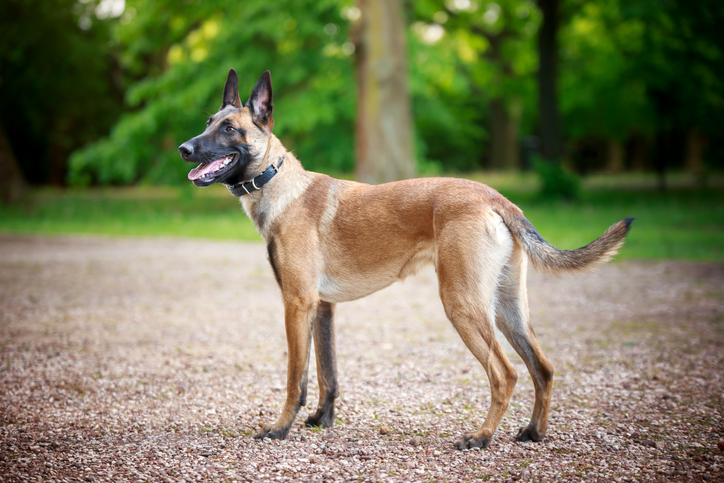
Often confused with the German Shepherd, Belgian Malinois are a strong and intelligent working breed in their own right, and they often make great police dogs and watchdogs. Both German Shepherds and Malinois trace their roots to herding livestock and, as a result, have a strong work ethic and innate athleticism.
Malinois tend to be a bit smaller and leaner than Shepherds. They also typically have fewer health problems than Shepherds (who often suffer from hip problems and anxiety). Belgian Malinois are known for their spirit and curiosity — this is a high-energy breed that requires intellectual stimulation and long walks. They need a purpose and enjoy learning new tricks and commands.
Want to learn more about dog breeds? Check out our stories below.
These Long Nose Dogs Have a Royal Pedigree — 7 Graceful Breeds That Are Adorable Too
9 Hound Dogs That Trainers Say Make the Best Family Pets
15 Teddy Bear Dogs That Look Like Stuffed Animals Come to Life












